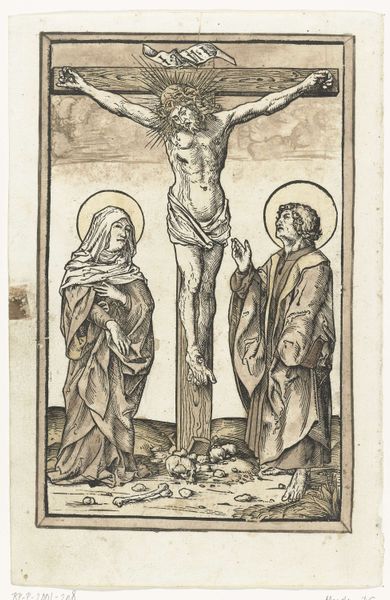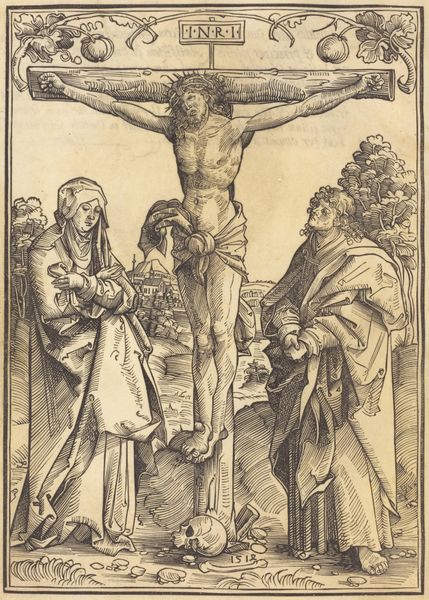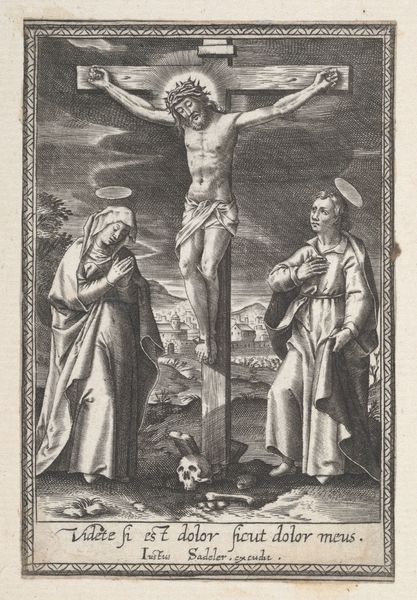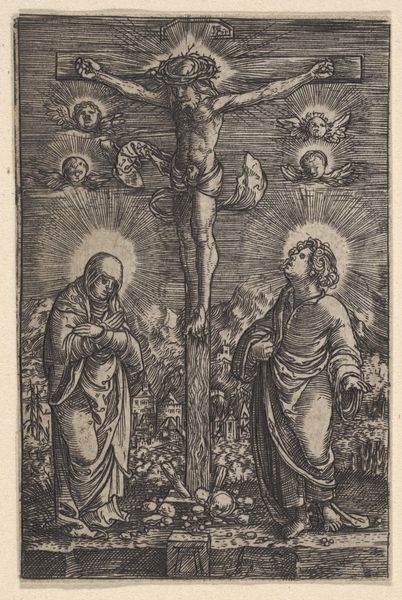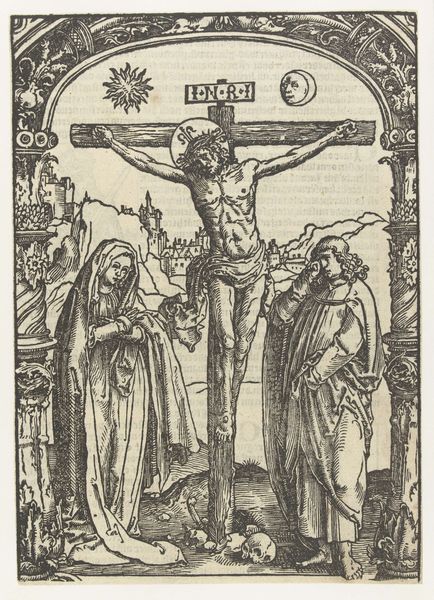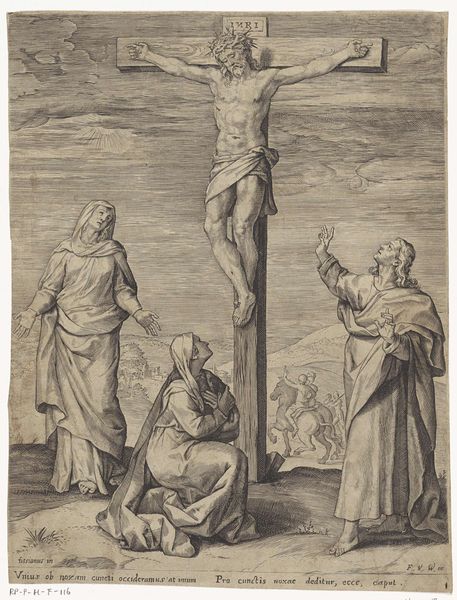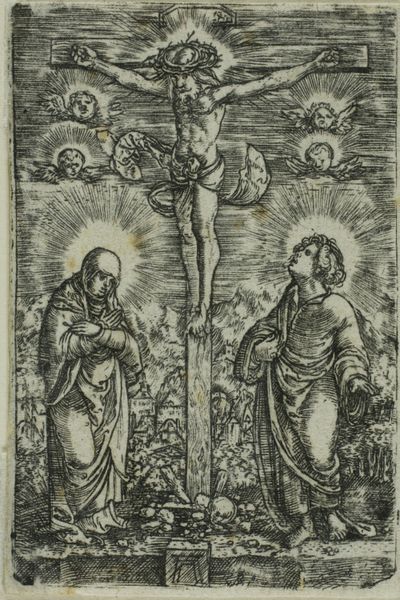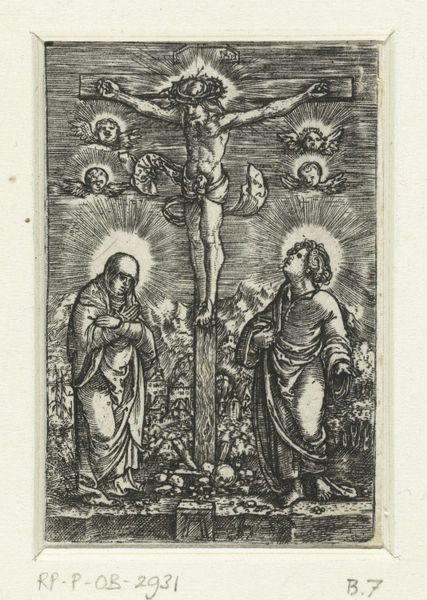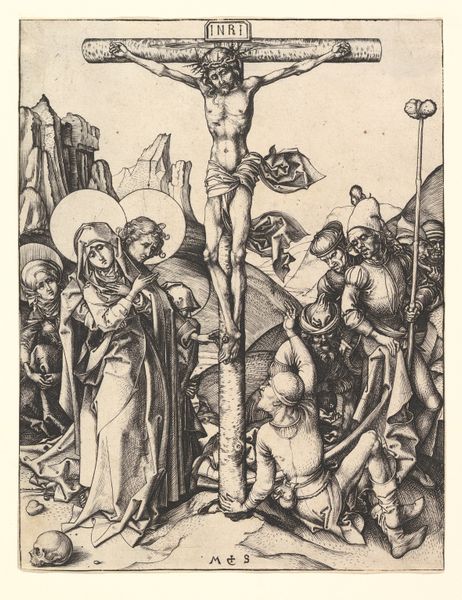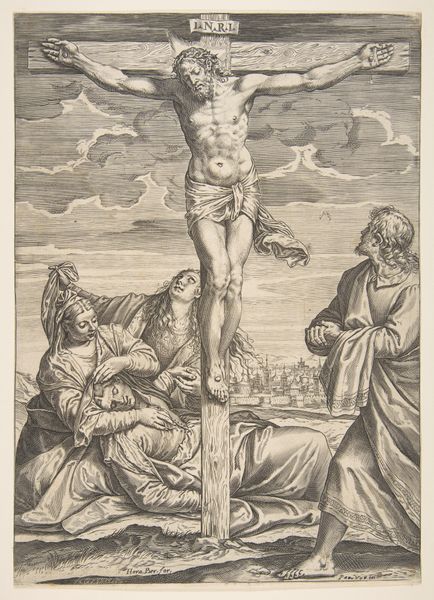
The Virgin of Sorrows: The Crucifixion; one of nine surrounding compartments from the Virgin of Sorrows, now separated 1520 - 1582
0:00
0:00
drawing, print, intaglio, engraving
#
drawing
#
narrative-art
# print
#
intaglio
#
mannerism
#
figuration
#
crucifixion
#
history-painting
#
italian-renaissance
#
engraving
#
virgin-mary
#
christ
Dimensions: Sheet: 2 13/16 × 2 1/16 in. (7.2 × 5.3 cm)
Copyright: Public Domain
Curator: Soaked in stark sorrow, this intaglio print is titled "The Virgin of Sorrows: The Crucifixion," created between 1520 and 1582 by Giorgio Ghisi. It depicts the crucifixion of Christ, observed by two mourning figures. Editor: What a raw, affecting scene, even rendered on this small scale! It practically bleeds anguish, don't you think? The thin lines feel like the characters are drawn from shadow, and the detail gives a certain… weight to the lightness, if that makes sense? Curator: Absolutely. The piece, a work of the Italian Renaissance reflecting Mannerist sensibilities, portrays not only the physical suffering but also the deep emotional weight carried by the Virgin Mary. Consider how her sorrow intersects with larger cultural narratives of female suffering, sacrifice, and powerlessness. Editor: That sorrow is so evident in the figures surrounding Christ on the Cross, yet for all of that overt expression I sense an extraordinary restraint too. Their presence offers a sense of humanity, really; I see the universal lament inherent in the subject and represented in each gesture, each bowed head. Curator: Precisely! Note how the architectural details in the backdrop offer perspective, pushing Christ to the foreground to symbolize that specific pain and suffering as relevant in our modern lives, to be explored as not some event of the distant past but a critical framework for evaluating contemporary crises of power and inequity. Editor: As an artist, I look at the precision required to make this. Each line, a conscious choice... I see the process mirrored in life, don't you? Painstaking action producing resonant aftershocks. It brings a certain…quiet desperation, really, the attempt to seize back from oblivion, to inscribe meaning even when feeling entirely lost. Curator: Indeed. By recognizing such intersections of religious history, artistic expression, and intersectional feminist viewpoints, this piece reveals both our human potential and profound institutional flaws to us all. Editor: To me, there's this potent reminder here – in confronting the deepest sorrows, a fragile but potent human solidarity surfaces. A somber artwork for reflecting in difficult times, wouldn't you say?
Comments
No comments
Be the first to comment and join the conversation on the ultimate creative platform.

